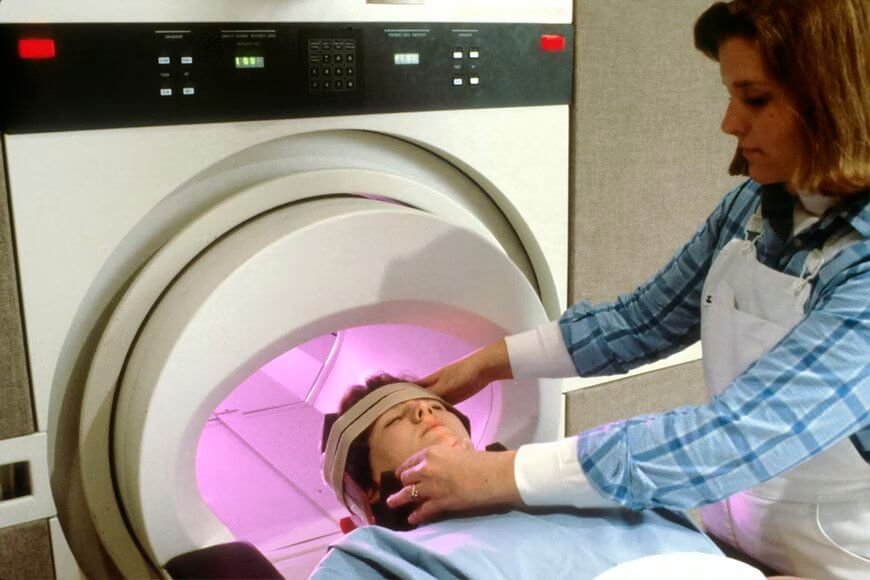Computed tomography or CT scan is a type of imaging test that uses unique x-ray technology to create detailed images of the inside of your body. While standard x-rays can show the outline of bones and reveal fractures, a CT scan can show much more detail about different organs and tissues. A spectral CT scan has become the gold standard in diagnostic imaging for a number of conditions.
It is widely used to detect and diagnose cancer, cardiovascular disease, and other medical conditions. If you’re wondering what is a ct scan and how long does it take? Here’s everything you need to know:
How Is A CT Scan Different From An x-ray Scan?
An x-ray scan uses ionizing radiation to create an image, which means it can cause some damage to the tissues it passes through, including DNA mutations and cell death. A computed tomography (CT) scan uses a large amount of radiation during the scanning process. For example, a full-body CT scan delivers about 50 times more radiation than a standard chest x-ray.
That’s why it’s essential to limit CT scans to situations where they’re medically necessary, such as when an x-ray isn’t enough to provide a precise diagnosis. If you have a CT scan, your healthcare provider may recommend getting the lowest radiation dose possible. Or, in some cases, you may opt for an alternative imaging test, such as an MRI. Compared with a CT scan, an MRI uses magnetic fields instead of ionizing radiation.
How Long Does A CT Scan Take?
A CT scan usually takes about 10 minutes. The time it takes for a CT scan also depends on the procedure. Some scans are more detailed than others and may require more time. If the person being scanned is not cooperative or there are areas of the body that need to be scanned in more detail, the scan may take a little longer.
Sometimes, a CT scan is done in multiple sessions to get the best possible image. This may require the scanned person to come back for another session. Ultimately, the amount of time it takes for a CT scan will vary depending on the individual case.
What Is The Procedure For A CT Scan?
Before the CT scan begins, you will be asked to remove any clothing, jewelry, and other items that might get caught in the machinery. You may also be asked to remove any piercings and dental bridgework, as these items can interfere with the scanning process.
Depending on the type of CT scan you are undergoing, you will be guided into a large machine that will take detailed images of your organs and soft tissues. For example, a CT scan of the abdomen and pelvis requires you to lie on your back on a slab inside the machine. The slab is then slowly moved into the machine.
Once you are inside the machine, you will be asked to stay very still for the duration of the scan. A brain CT scan may be performed with you lying down, sitting, or standing up inside the machine. You may feel vibrations or hear a loud noise while the scan is being performed.
Who Should Get A CT Scan?
A CT scan is a type of imaging test that uses unique x-ray technology to create detailed images of the inside of your body. If you need to see what’s happening inside your body, but a CT scan may be proper for you, an x-ray or other imaging test is not detailed enough. A CT scan can show detailed images of organs and other internal structures, such as blood vessels and the spinal cord.
This makes it a valuable tool for diagnosing certain medical conditions. A ct scan has become the gold standard in diagnostic imaging for a number of conditions. It is widely used to detect and diagnose cancer, cardiovascular disease, and other medical conditions.
What Are The Side Effects of a CT Scan?
As CT scans use ionizing radiation, they can potentially cause damage to the tissues they pass through. This means that, over time, CT scans could increase your risk of developing certain types of cancer. Fortunately, it can take years for the health effects of a CT scan to become noticeable, which means you can take steps to reduce your risk.
One way to lower your risk of developing cancer from CT scans is to find ways to reduce your radiation exposure. For example, you can ask your doctor to minimize the number of CT scans you receive. You can also ask them to use each scan’s lowest possible radiation dose. Unfortunately, many doctors are unfamiliar with the potential risks of CT scans and how they can minimize radiation exposure.
Conclusion
A CT scan is a type of imaging test that uses unique x-ray technology to create detailed images of the inside of your body. While standard x-rays can show the outline of bones and reveal fractures, a CT scan can show much more detail about different organs and tissues. CT scans have become the gold standard in diagnostic imaging for a number of conditions.
They are widely used to detect and diagnose cancer, cardiovascular disease, and other medical conditions. CT scans use a large amount of radiation, which means they can potentially cause cancer over time. Fortunately, it can take years for the health effects of a CT scan to become noticeable, which means you can take steps to reduce your risk, such as asking your doctor to minimize the number of CT scans you receive.

